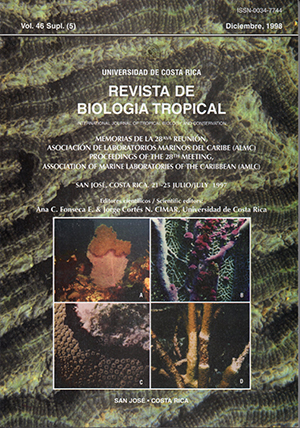Abstract
A coral disease characterized by a novel pattern of rapid tissue destruction first appeared on reefs of the middle Florida Keys in lune 1995. Between lune and October 1995 the disease infected 17 species of scleractinian corals and the hydrocoral Millepora alcicornis. Localized populations of Dichocoenia stokesi, the species most affected, revealed up to 38% mortality. Many colonies exhibited complete tissue loss within days as the disease moved across colonies at rates of up to 2 cm per 24 hr. Typically tissue loss was initiated at the base of the colony and moved upward. At times disease progression halted and colonies retained partial tissue resembling a cap on the top of an otherwise denuded colony. Laboratory cultures of samples from the disease line revealed a dominant bacterium that, when isolated and characterized using genetic and metabolic techniques, most closely matched the genus Sphingomonas. Pure laboratory cultures of the bacterium produced disease in freshly collected coral colonies incubated in laboratory aquaria. The disease that we call plague type II appeared on different reefs of sou Florida and the Florida Keys in 1996 and 1997. While coral mortality associated with each of the three outbreaks was regionally confined and did no! recur in subsequent years on the same reefs, the high mortality rates distinguish this disease as one of the most serious yet documented.##plugins.facebook.comentarios##

This work is licensed under a Creative Commons Attribution 4.0 International License.
Copyright (c) 1998 Revista de Biología Tropical
Downloads
Download data is not yet available.


